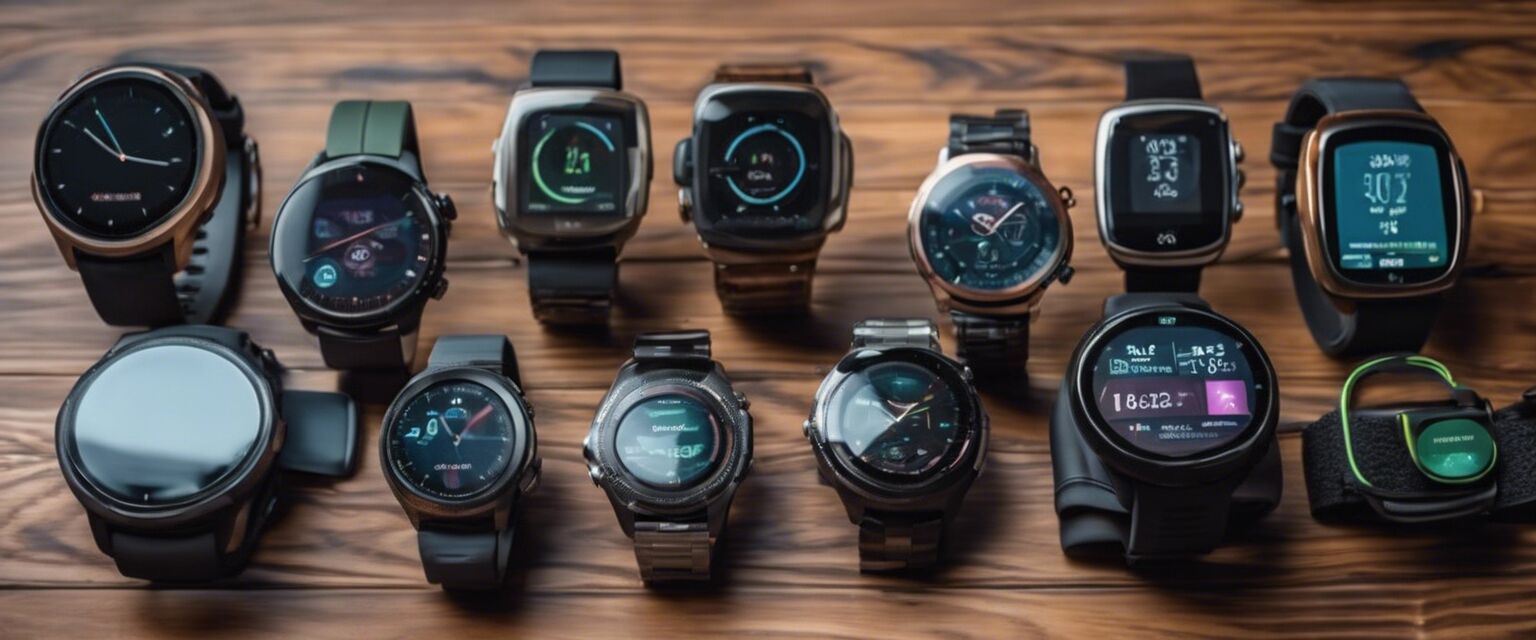
Wearable Fitness Tech
Key Takeaways
- Wearable fitness tech includes smartwatches, fitness trackers, and more.
- These devices can help track activity, monitor health metrics, and provide insights.
- Choosing the right device depends on your fitness goals and lifestyle.
- Integration with apps enhances the functionality of wearable tech.
In today's fast-paced world, wearable fitness technology has become an essential tool for fitness enthusiasts and casual users alike. From smartwatches to fitness trackers, these devices provide valuable insights into your health and activity levels. This article will serve as a comprehensive guide to wearable fitness tech, helping you understand the various options available, their features, and how to choose the best device for your needs.
What is wearable fitness technology?
Wearable fitness technology refers to devices that you can wear on your body to monitor various health and fitness metrics. These devices can track everything from heart rate to sleep patterns, providing users with real-time data to help them achieve their fitness goals.
Types of wearable fitness devices
There are several types of wearable fitness devices available today. Below is a breakdown of the most popular categories:
| Device Type | Description | Key Features |
|---|---|---|
| Smartwatches | Multi-functional devices that offer fitness tracking along with smartwatch features. | GPS, heart rate monitoring, notifications, and app integration. |
| Fitness Trackers | Devices focused primarily on tracking fitness activities. | Step counting, distance tracking, calories burned, and heart rate. |
| Heart Rate Monitors | Devices specifically designed to monitor heart rate. | Real-time heart rate tracking, fitness zone monitoring. |
| Smart Clothing | Garments embedded with sensors to track body metrics. | Posture correction, muscle activity monitoring. |
Benefits of using wearable fitness technology
Wearable fitness tech offers numerous benefits, including:
- Data tracking: Provides insights into your activity levels, sleep patterns, and overall health.
- Motivation: Encourages users to stay active by setting goals and tracking progress.
- Health awareness: Helps in monitoring vital signs and fitness metrics.
- Personalized feedback: Offers tailored advice based on your performance data.
How to choose the right wearable fitness device
Choosing the right device can be overwhelming. Here are some factors to consider:
- Fitness goals: Determine what metrics are important for your fitness journey.
- Compatibility: Ensure the device works with your smartphone or other devices.
- Battery life: Consider how often you need to recharge the device.
- Budget: Set a budget and explore options within that range.
- User reviews: Read reviews to gauge the performance and reliability of the device.
Popular wearable fitness technologies
Here are some of the most popular brands and devices in the market:
| Brand | Device | Features |
|---|---|---|
| Apple | Apple Watch Series | Heart rate monitoring, GPS, fitness tracking, swim-proof. |
| Fitbit | Fitbit Charge | Step tracking, sleep monitoring, heart rate, app integration. |
| Garmin | Garmin Forerunner | Advanced GPS, heart rate monitoring, VO2 max estimation. |
| Samsung | Galaxy Watch | Fitness tracking, body composition analysis, sleep tracking. |
How to maximize the use of wearable fitness tech
To get the most out of your wearable fitness device, consider the following tips:
Beginner tips
- Set realistic goals based on your current fitness level.
- Regularly sync your device with its companion app for updated insights.
- Explore all the features your device offers to fully utilize its capabilities.
- Engage with community features if available for added motivation.
Integration with apps
Many wearable devices come with companion apps that enhance their functionality. These apps allow users to:
- Log workouts and activities.
- Track nutrition and caloric intake.
- Monitor health metrics over time.
- Connect with friends for challenges and motivation.
Challenges and limitations of wearable fitness tech
While wearable fitness technology has many benefits, it also comes with challenges:
Pros
- Convenient and accessible data tracking.
- Encourages a more active lifestyle.
- Customizable to fit individual fitness goals.
Cons
- Battery life can be limited.
- Some devices can be expensive.
- Data accuracy may vary between devices.
Conclusion
Wearable fitness technology has revolutionized how we approach fitness and health. By selecting the right device and utilizing its features, you can gain valuable insights into your health and stay motivated on your fitness journey. Whether you're a seasoned athlete or just starting, integrating wearable tech into your routine can help you achieve your goals.
Explore more
For more information on fitness equipment and accessories, check out our other sections:
- Cardio Machines
- Home Gym Essentials
- Outdoor Fitness Gear
- Smart Fitness Gadgets
- Strength Training Equipment
- Yoga and Flexibility Accessories











